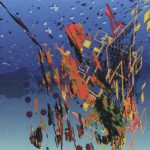Anthony Rowe
Most Recent Affiliation:
- squidsoup
Website:
Writings and Presentations:
-
Title:
Within an Ocean of Light: Creating Volumetric Lightscapes
Writing Type: Paper
Author(s):
Exhibition: SIGGRAPH 2012: In Search of the Miraculous
Abstract Summary:This paper documents explorations into an alternative platform for immersive and affective expression within spatial mixed reality installation experiences. It discusses and analyzes experiments that use an advanced LED cube to create immersive, interactive installations and environments where visitors and visuals share a common physical space. As a visual medium, the LED cube has very specific properties and affordances, and optimizing the potential for such systems to create meaningful experiences presents many interlinked challenges. Two artworks exploring these possibilities are discussed. Both have been exhibited internationally in a variety of settings. Together with this paper, the works shed some light on the design considerations and experiential possibilities afforded by LED cubes and arrays. They also suggest that LED grids have potential as an emerging medium for immersive volumetric visualizations that occupy physical space.
Title: Glowing Pathfinder Bugs: A Natural Haptic 3D Interface for Interacting Intuitively with Virtual Environments
Writing Type: Paper
Author(s):
Exhibition: SIGGRAPH 2010: TouchPoint: Haptic Exchange Between Digits
Abstract Summary:Glowing Pathfinder Bugs is an interactive art project primarily aimed at children and created by the digital arts group Squidsoup. It uses projection to visualize virtual bugs on a real sandpit. The bugs are aware of their surroundings and respond to its form in their vicinity. By altering the topography of the sand, participants affect the bugs’ environment in real time, facilitating direct communication between them and computer-generated creatures.
This highly malleable and tactile physical environment lets us define and carve out the landscape in which the creatures exist in real time. Thus, virtual creatures and real people coexist and communicate through a shared tactile environment. Participants can use natural modes of play, kinesthetic intelligence, and their sense of tactility to collaboratively interact with creatures inhabiting a hybrid parallel world.
This paper describes the project and analyzes how children in particular respond to the experience; it looks at the types of physical formations that tend to be built and notes how children instinctively anthropomorphize the bugs, treating projected imagery as living creatures – though with a ludic twist.
Role(s):





